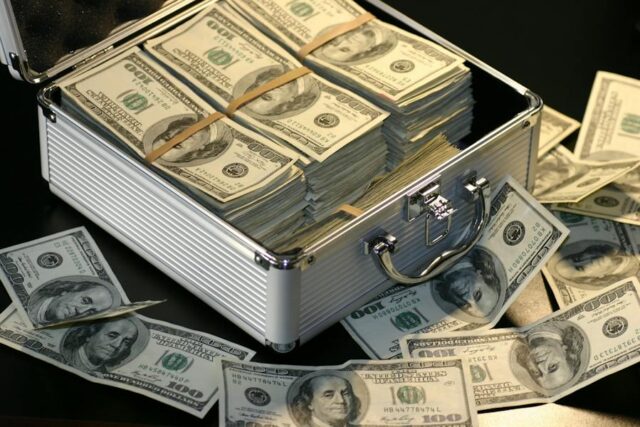All jewelry lovers must have encountered an important question during their exploits: “How much is a Burmese ruby worth?”
Humans have always been fascinated with beautiful natural rocks such as rubies, gold, and diamonds, which have grown in value over the years.
Most of them are purely for aesthetics since beauty is an essential part of human life, affecting our lives in many ways.
But how much do you have to spend to own such fineries? Here is an article that will explore all aspects of rubies in detail to make everything clearer;
How Much Is A Burmese Ruby Worth?
Burmese rubies are the most expensive, with the best-quality untreated rubies going for about $35,000 and treated ones fetching $12,000 per carat.
The price will vary depending on the quality of the ruby, and it can be lower but remain in the thousands or go as high as $1 million.
Burma gems are the most beautiful and highest-quality gemstones in the world, which is why they are more expensive.
What Determines The Price Of A Ruby?
Rubies are a popular replacement for diamonds since they resemble each other in texture, but rubies are much brighter.
This means they make for more outstanding jewelry that sometimes gets rather expensive. But what is the metric of knowing the price of a ruby?
1. The Color
The first and most crucial aspect that determines the value of a ruby is its color. The rubies with the most intense color fetch the highest price on the market, so the more intense, the better the ruby is.
Pigeon blood-red rubies have the deepest, vividly fluorescent red color; therefore, they are considered the most valuable rubies. Other shades of rubies come close to pigeon blood-red and have almost similar price tags.
Pinkish or purplish-toned rubies are often much cheaper than purer rubies, and a stone’s value will reduce if the color becomes dull or dark. Gemologists generally use saturation, hue, and tone as the metric for analyzing how pure the ruby is.
A gem’s hue refers to its natural color, which can be red, blue, yellow, etc. The tone is the depth of the gem’s color from light to dark, and saturation refers to how intense the color is in the stone. This goes from light to strong and vivid for the best ones.
A good ruby combines the best of these three features; understanding them is the key to getting a beautiful ruby for the right price.
2. Clarity
Clarity in gems refers to the absence or presence of natural inclusions in a gemstone that add to its beauty. Natural inclusions are mineral formations in a gem that create patterns, such as in diamonds and rubies.
All natural gems will have these mineral formations, and rubies often have more inclusions than sapphires, which is vital for their value. Inclusions are a show of quality and authenticity, so the more included a ruby is, the more expensive it gets.
A naked eye may not see inclusions, but they are clear when you magnify the rock, and their absence implies that the rock is synthetic or has been treated. Eye-clean rubies are ones whose inclusions can only be seen under magnification and not by the naked eye.
These are the rarest rubies to find and are the most expensive when analyzing ruby clarity. The value of a ruby will increase with its clarity, and most people go for slightly included rubies since they offer the best value.
3. Treatment
Rubies that haven’t been treated or heated to enhance their color and beauty are considered the best in the gem world. There is also room for treated rubies, and many stores will take them despite their lower value since they appear nearly as beautiful to the naked eye.
The value difference is more complicated since it changes depending on the carat sizes. The value difference between heated and unheated African rubies up to 1 carat is relatively minor. For instance, a 1-carat unheated ruby ring can cost $7000, while a heated one costs $4000.
This only holds if the heated one matches the unheated ruby’s qualities. Despite this, it is better to spend a little extra and get the superior quality of an unheated ruby. The price difference will get higher for 2 carats, especially for Burmese rubies.
A treated high-end Burmese ruby has a market value of about $12,000 per carat, while an unheated one will fetch around $35,000 per carat.
4. Cut
The cut refers to the faceting of a gem, and it is one of the last considerations when deciding the value of a gemstone. The clarity and color are often more critical to jewelers, but a good cut enhances these factors and creates a more beautiful and reflective ruby.
There are several standard ruby cutting shapes, such as cabochon, pear, oval, cushion, and round. This choice mostly depends on the buyer and how they want to use the ruby, whether for a necklace, tiara, ring, or another piece of jewelry.
5. Country of Origin
There are ruby mines all over the globe, and the stones have different qualities depending on their region of origin since they were subjected to different conditions.
The best rubies come from Burma, but there are good stones from Mozambique, Sri Lanka, Nepal, Tanzania, and Australia.
Rubies from Burma fetch a higher market value that can be double or triple what other stones get. They have a distinct deep red color valued in rubies and are renowned for their high presence of pigeon-blood rubies that other regions can’t match.
African rubies are the second most valuable from Madagascar and Mozambique and are famous for their dark red color. They offer a middle ground between expense and beauty, making them popular.
6. Size
Bigger is always more expensive when it comes to rubies, but this doesn’t necessarily refer to the actual size of a ruby. The size is not a primary concern when choosing a ruby, but it’s an important factor.
The value of a ruby rises with its carat weight, and most rubies occur in 1-carat sizes. Stones weighing more than 2 carats are more scarce and expensive than sapphires of the same size. 3-carat rubies are scarce, even rarer than diamonds of a similar weight.
Understanding Carats In Jewelry and Rubies
When people think of diamonds, gold, rubies, and sapphires, the first thing that comes to mind is carats, but it might not be clear what it is. As a jeweler, you ought to understand this unit and how it affects the price to get the best deals in the industry.
Carats are a historic measurement that was derived from the use of the carob seed for measurements. The carob seed was a good benchmark for measuring gems since they had a consistent weight and size.
Carats are the preferred measurement metric for gems because they are highly accurate and expensive, so each unit matters.
Like most other gems, rubies are weighed in carats, but sometimes they also use measuring points, especially for small gems that weigh less than 0.2 carats. Carat weight is one of the factors that determines the value of a ruby, but it has nothing to do with the quality.
Carats are accurate today and have been globally standardized for that a carat equals 200 milligrams, a fifth of a gram. Each carat is divided into 100 points; consider it a dollar with 100 pennies.
So a 1.50-carat diamond or ruby has 150 points, and weighing gemstones to three decimal places is standard practice. This gives the most accurate result, ensuring everyone gets what they want and isn’t cheated.
Carat measures how hard it is to find a gem of the same quality in rubies, and rarity means more money. In simpler terms, carats are a measure of rarity, and the higher the carat in a ruby, the more expensive the ruby will be since it is rare.
Rubies exist in a shallow tabular form, and there is a high interest in red colors that increase the prices. This situation makes appropriately colored rubies that are more than 1 carat very scarce and thus expensive.
The Hope Ruby is one of the largest high-quality gems in the world, weighing 32 carats, and was formerly the most expensive ruby sold. The Sunrise Ruby dethroned it in price and quality, but it is lighter at only 25 carats.
Conclusion
You now have a clearer understanding of how much a Burmese ruby is worth, and you understand the criteria for coming to that value.
Rubies are the ultimate show of nature’s beauty; you could pay thousands of dollars to get the best quality and look.
Burmese rubies are costly since they are of the highest natural quality and give the best products. Their price might be daunting for most people, so they opt for African rubies that can almost match the Burmese beauty but come more affordable.














